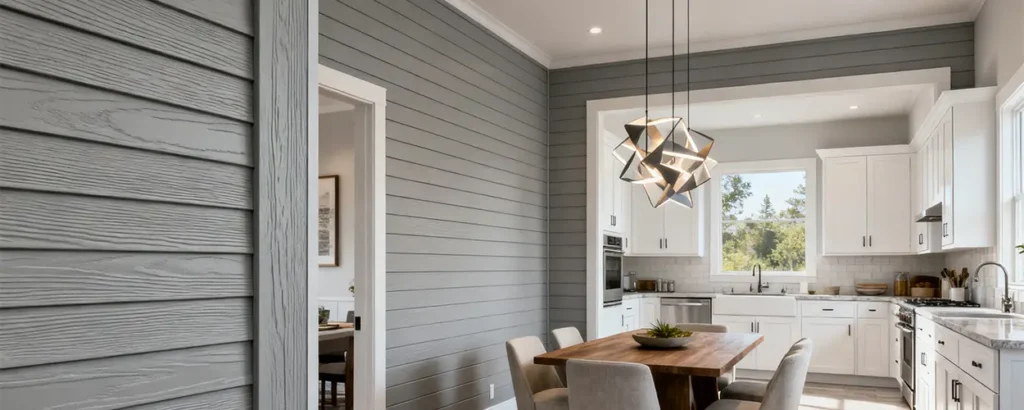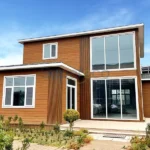Are modern homeowners rethinking their wall material choices? Composite Wall Panel solutions, including WPC Wall Panels, are gaining significant attention for good reason. These innovative materials combine durability, sustainability, and aesthetic appeal in ways that traditional options like MDF cannot match. This article examines whether these panels represent the future of home design by exploring their key benefits, environmental advantages, and practical applications that make them stand out from conventional materials.
Sustainability and Environmental Benefits
The Eco-Friendly Choice for Conscious Homeowners
One of the most compelling arguments for Composite Wall Panel adoption is their environmental advantage. Unlike traditional wood products that contribute to deforestation, WPC (Wood-Plastic Composite) panels typically utilize recycled materials—wood fibers from sawmill waste and recycled plastics. This manufacturing approach not only reduces landfill waste but also minimizes the carbon footprint associated with new construction materials. When compared to MDF production, which often involves formaldehyde-based resins and virgin wood fibers, the eco-friendly credentials of composite panels are significantly stronger. For homeowners seeking LEED certification or simply wanting to make more sustainable choices, these panels offer a clear path toward greener living without compromising on quality or aesthetics.

Enhanced Durability and Performance
Outperforming Traditional Materials in Every Way
The performance benefits of WPC Wall Panels extend far beyond basic functionality. These panels are engineered to withstand conditions that would damage or destroy traditional materials. Their 100% waterproof nature makes them completely resistant to moisture absorption, preventing the warping, swelling, and mold growth that commonly plague MDF installations. The composite structure provides exceptional impact resistance—able to withstand daily wear and tear that would dent or scratch other surfaces. Unlike MDF, which can deteriorate quickly in humid environments, composite panels maintain their structural integrity and appearance for decades. This longevity translates to better value over time, as homeowners avoid the frequent replacements and repairs often needed with conventional wall materials.
Design Versatility and Aesthetic Appeal
Unlimited Creative Possibilities for Modern Spaces
The aesthetic flexibility of Composite Wall Panel systems is truly remarkable. Modern manufacturing techniques allow these panels to replicate the appearance of natural wood, stone, marble, or abstract contemporary patterns with stunning realism. This means homeowners can achieve high-end looks without the maintenance headaches or cost associated with natural materials. The panels come in various textures, from wood-grain finishes to smooth modern surfaces, and can be customized in numerous colors. This versatility enables seamless integration with any design scheme, from rustic farmhouse to ultra-modern minimalist. Unlike paint-grade MDF, which requires frequent repainting and shows wear quickly, composite panels retain their vibrant color and texture through their UV-stable coatings, ensuring lasting beauty.
Cost-Effectiveness and Long-Term Value
Smart Investment for Today's Homeowner
While the initial cost of WPC Wall Panels might be higher than basic MDF, the long-term value proposition is undeniable. Consider the hidden costs of traditional materials: MDF requires professional painting, regular maintenance, and likely replacement in moisture-prone areas. Composite panels, however, need minimal upkeep—no repainting, sealing, or special treatments. Their installation is often quicker and requires less skilled labor, thanks to interlocking systems that simplify the process. When you factor in their exceptional durability and minimal maintenance needs, composite panels typically offer a lower total cost of ownership over 10-15 years compared to traditional alternatives. This combination of immediate aesthetic appeal and long-term economic benefit makes them a financially savvy choice for modern homes.
Conclusion: The Verdict on Future Home Design
The evidence strongly suggests that Composite Wall Panel systems, including WPC Wall Panels, are indeed shaping the future of home design. Their combination of environmental sustainability, superior durability, design flexibility, and long-term value addresses the core concerns of modern homeowners and designers. As construction trends move toward more sustainable, low-maintenance, and high-performance materials, these panels check all the right boxes. While traditional materials like MDF will likely remain in use for specific applications, the comprehensive benefits of composite panels position them as the leading choice for forward-thinking residential and commercial projects.






